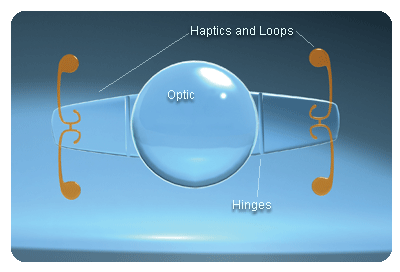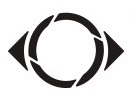Perhaps the most common question I receive is whether near vision loss due to old age is correctable. So often people feel that after 40, they must accept reading glasses as the only option in life. They have been told that LASIK cannot correct their problem.
LASIK does offer a solution that most people would find acceptable. This is known as monovision LASIK and provides the opportunity to see both distance and near by focusing one eye for near and one eye for distance. This is similar to CK, conductive keratoplasty, but is a permanent correction and will not fade with time.
In addition to monovision LASIK, newer options can correct both eyes to see at distance and near. These are intraocular surgeries that are nearly identical to cataract surgery, except with upgraded lenses. We can separate them into two categories: accommodative and multifocal.
 Currently there is only one FDA approved accommodative IOL on the market. Crystalens offers a foldable lens which replaces the natural lens inside the eye and can move naturally within the eye as the patient focuses on near objects. Because the lens is a monofocal lens it provides excellent optical quality.
Currently there is only one FDA approved accommodative IOL on the market. Crystalens offers a foldable lens which replaces the natural lens inside the eye and can move naturally within the eye as the patient focuses on near objects. Because the lens is a monofocal lens it provides excellent optical quality.
 The Alcon Restor IOL is a multifocal. Similar to the Crystalens it provides for good vision at both distance and near. While the Crystalens provides slightly better optics due to its monofocal design, the Restor lens provides slightly clearer near vision.
The Alcon Restor IOL is a multifocal. Similar to the Crystalens it provides for good vision at both distance and near. While the Crystalens provides slightly better optics due to its monofocal design, the Restor lens provides slightly clearer near vision.
Another IOL, the ReZoom, provides both distance and near vision. This multifocal lens provides better intermediate range vision than the Restor but might sacrifice a little more in near vision.
Turner Eye Institute offers a wide variety of near vision correction methods. If you are interested in learning more about these new technologies, call our center and discuss this with one of our patient counselors. In addition to LASIK, they are knowledgeable over a wide variety of refractive surgery techniques.

 Effective March 11th, 2024, we are relocating our office in Concord to 1220 Concord Ave, Suite 290, Concord, CA 94520
Effective March 11th, 2024, we are relocating our office in Concord to 1220 Concord Ave, Suite 290, Concord, CA 94520